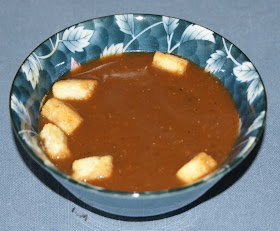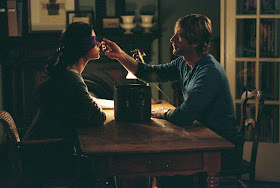Of course, we cooked for Thanksgiving, and we used recipes that we've written for Cooking with the Movies. How could we pass up an opportunity for another taste-testing?
The turkey was Pavo Mexicano (Turkey Mexican-style) with mixed vegetable stuffing from the film What's Cooking?:

We provided an assortment of cheeses (not from a film, but it's a nice spread) with guacamole and pate:

These are the Candied Sweet Potatoes with Walnuts, Cranberries, and Marshmallowettes from the movie
Once Upon a Time When We Were Colored:
Southern String Beans, from the same film, simmered with bacon for two hours--just amazing!

A few of our guests, in mouth-watering anticipation:

Dixie Biscuits with Fig Jam:

Cousin Beauty's Sweet Potato Pie:

Mississippi Delta Jelly Cake:

Rusty, proud chef and host:




 Dixie Biscuits with Fig Jam:
Dixie Biscuits with Fig Jam: Cousin Beauty's Sweet Potato Pie:
Cousin Beauty's Sweet Potato Pie:
































